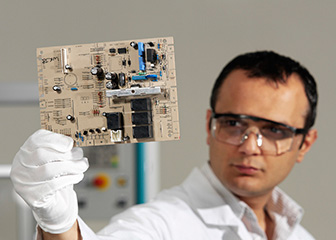Summary

| Quick Facts: Electro-mechanical Technicians | |
|---|---|
|
$49,550 per year
$23.82 per hour |
|
| Associate’s degree | |
| None | |
| None | |
| 16,400 | |
| 1% (Little or no change) | |
| 100 | |
What Electro-mechanical Technicians Do
Electro-mechanical technicians combine knowledge of mechanical technology with knowledge of electrical and electronic circuits. They install, troubleshoot, repair, and upgrade electronic and computer-controlled mechanical systems, such as robotic assembly machines.
Work Environment
Electro-mechanical technicians work closely with electrical and mechanical engineers. They work primarily in manufacturing, utilities, and research and development.
How to Become an Electro-mechanical Technician
Electro-mechanical technicians typically need either an associate’s degree or a postsecondary certificate.
Pay
The median annual wage of electro-mechanical technicians was $49,550 in May 2010.
Job Outlook
Employment of electro-mechanical technicians is expected to grow 1 percent from 2010 to 2020, resulting in little or no change for this occupation. Electro-mechanical technicians are generalists in technology, and their broad skill set will help sustain demand for their services.
Similar Occupations
Compare the job duties, education, job growth, and pay of electro-mechanical technicians with similar occupations.
O*NET
O*NET provides comprehensive information on key characteristics of workers and occupations.
Contacts for More Information
Learn more about electro-mechanical technicians by contacting these additional resources.










